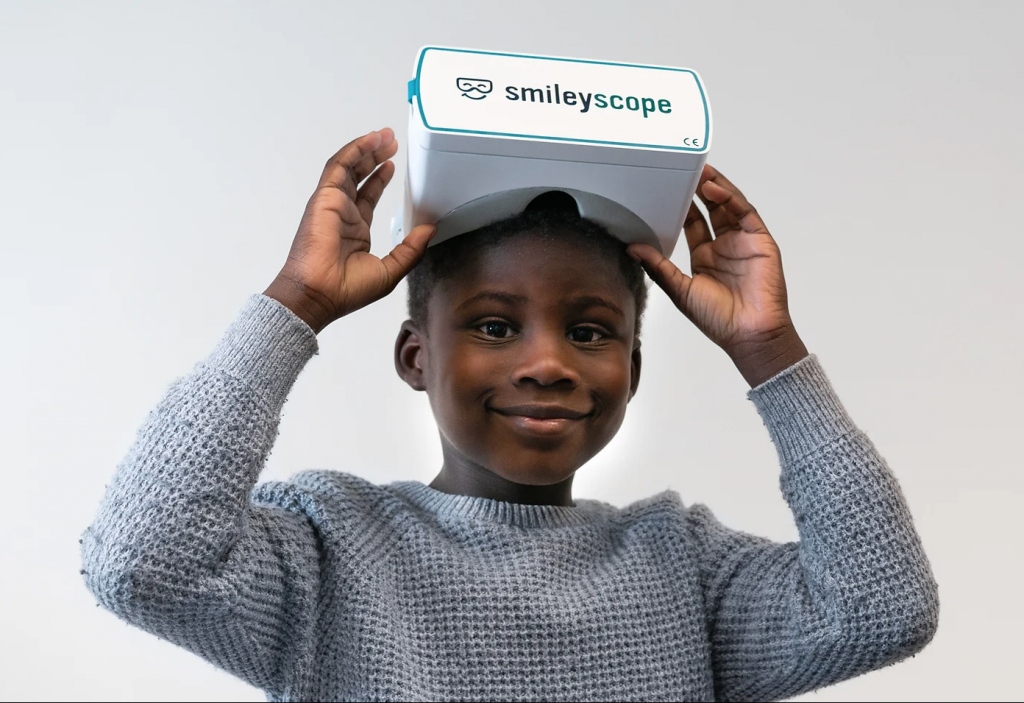
Smileyscope helps children to cope with medical procedures by immersing them in the world of the animated character Poggles the Penguin.
FDA Approves VR Device for Children During Medical Procedures, Reducing Pain
Doctors offer little in the way of alleviating the pain and fear children suffer when they must go through medical procedures, but a new VR device and program called Smileyscope may help to change that when they are getting blood draws or IV insertions, according to a story on MIT’s technologyreview.com.
The medical VR is the latest of several introduced in the past five years to help people cope with temporary and chronic pain caused by medical conditions or interventions. (For adults, Buzzy, a buzzing device placed on the arm that confuses nerves during a blood draw and tricks the mind into blocking pain, does not involve VR.) The FDA approved RelieVRx in 2021 as the first VR therapy to get its stamp of approval. It teaches pain relief strategies like mindfulness, cognitive-behavioral therapy and relaxation to manage chronic pain.
Smileyscope works differently because it immerses young children into a VR environment
The technologyreview.com article noted that, “In two clinical trials that included more than 200 children from age 4 to 11, the Smileyscope reduced self-rated pain by up to 60% and anxiety by up to 40%.” The magazine interviewed Paul Leong, Chief Medical Officer & Co-Founder of Smileyscope, who noted that it occupies children beyond being a distraction, so that fewer pain signals get through.
“And that’s the mechanism of action for virtual reality,”
The VR relies on an animated character called Poggles the Penguin, who walks them through the procedure before it begins, which likely reduces anxiety, and then reframes what’s being done “in a positive light.” For instance, it takes children on an underwater adventure with surprise guests and animated experiences. In the VR deep-sea reality, “the cool swipe of an alcohol wipe becomes cool waves washing over their arm. The pinch of the needle becomes a gentle fish nibble.”
A pain expert explains:
“There are a lot of ways to distract people,” says Beth Darnall, a psychologist and director of the Stanford Pain Relief Innovations Lab. But the way that Smileyscope goes about it, “that’s really powerful.”
It’s certainly one of the most sophisticated VR pain-reducing experiences available. More than 20 years ago, researchers invented SnowWorld to help people with severe burns endure wound dressing changes and other painful procedures.
“We created a world that was the antithesis of fire,” Hoffman told NPR back in 2012, “a cool place, snowmen, pleasant images, just about everything to keep them from thinking about fire.” Other groups are exploring VR for post-operative pain, childbirth, pain following dental procedures and more.
RelieVRx can be used at home for the 50 million people with chronic pain, leading to a better quality of life.
read more at smileyscope.com.au







Leave A Comment